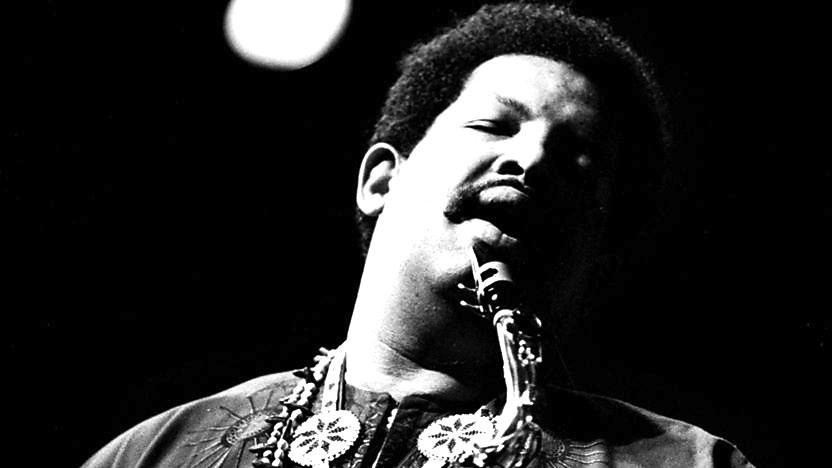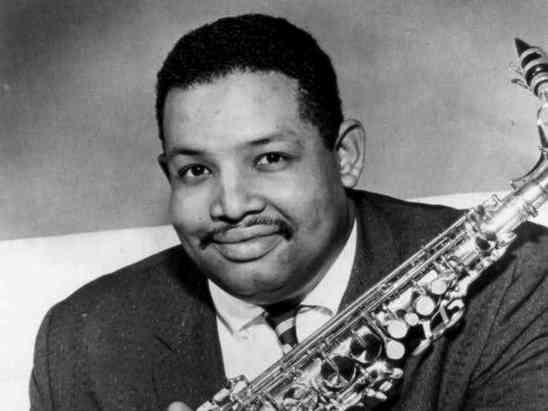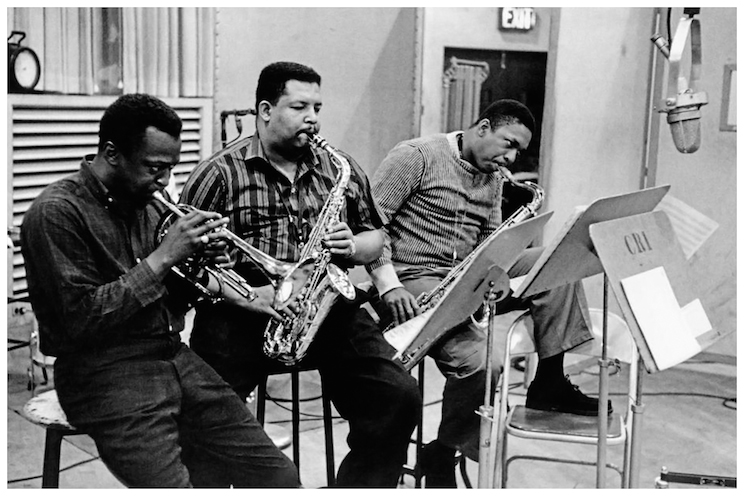
Julian Adderley was born on September 15th, 1928 in Tampa, Florida. He initially wanted to play tenor saxophone, but since both money and instruments were scarce during the Second World War, Adderley ended up buying a beat-up alto.
While in high school, Julian received his nickname Cannonball. Originally, friends called him “Cannibal,” because of his large appetite, but through many mispronunciations it became “Cannonball.”
After high school, he attended Florida A&M University, then taught music to high school students at Dillard High School in Fort Lauderdale. In 1950, Adderley was drafted into the U.S. Army. He was a member of the 36th Army Band, which played mostly dance material. Several other notable jazz musicians in this band were trombonist Curtis Fuller and Cannonball’s brother Nat, who played trumpet and cornet.
The band eventually wound being stationed in Washington D.C., where Cannonball studied music at the United States Naval Academy. He then ended up in Kentucky, where he led the base band at Fort Knox. Cannonball and Nat were both discharged in the mid 1950s, at which point they decided to move to New York City together.
Initially, Cannonball enrolled at New York University for graduate studies in music, but quickly became too busy playing gigs to attend class. His got his first gig in the city with bassist Oscar Pettiford at the Café Bohemia, after one night when he went to see the band and saxophonist Charlie Rouse forgot his horn. Since no one else in the band had one, Pettiford asked Cannonball to sit in on “I Remember April,” and he quickly got the gig.
Even though he was already making waves on the New York scene, Cannonball decided to leave New York and return to his teaching position in Fort Lauderdale. The city’s pull was too strong, however, and by 1956 he was back on the scene. Following his return, Adderley formed his own group with Nat, pianist Junior Mance, and bassist Sam Jones. The group gigged briefly, before Adderley was asked to join Miles Davis’s group in 1957.
Even before officially joining Davis, they appeared together on Adderley’s 1958 Blue Note release, Somethin’ Else. They are joined on this album by pianist Hank Jones, bassist Sam Jones, and drummer Art Blakey on the songs “Autumn Leaves” and “Love for Sale.”
Cannonball, with tenor saxophonist John Coltrane, rejuvenated Davis’s group and together they created a fresh sound that created a stir in the jazz world. Adderley appeared with Davis on many notable recordings in the late 1950s, including Milestones and Porgy and Bess, in which Adderley can be heard on the songs “Buzzard Song,” “Fishermen, Strawberry and Devil Crab,” and “Summertime.”
Adderley’s musical output with Davis is truly remarkable, given the short time the group was together. Adderley also informally managed the band’s finances during his tenure with Davis, and also recommended that Davis hire pianist Bill Evans and drummer Jimmy Cobb before the Kind of Blue sessions.
In May of 1958, Adderley went into the studio with Davis and Coltrane, where they recorded several songs including “On Green Dolphin Street.” The group’s set at the Newport Jazz Festival, which included “Fran-Dance,” was recorded, although no film of the performance exists. In the fall of 1958, the Miles Davis sextet performed in the Edwardian room at the Plaza hotel. This performance was recorded and became the album Jazz at the Plaza.
In 1959, the group along with pianist Bill Evans went to the studio to record the sessions that became Kind of Blue. This album arguably set the tone for modal jazz, however loosely defined that category may be. Between March and April of 1959, the group recorded the songs that ultimately made up the album. In the nexus of Evans’s impressionistic harmonies, Coltrane’s murderous technique, Adderley’s blues-driven solos, and Davis’ abilities as a leader, they created what has rightly been considered one of the greatest achievements in jazz.

This configuration can be heard on the modal classic “So What” and “All Blues,” where Adderley’s solo swings so hard it raises the roof. Also explored on the album is “Flamenco Sketches,” which has little to do with Spain but is a hauntingly memorable ballad.
In the fall of 1959, Adderley left Davis to form his own group with Nat on cornet and trumpet, Bobby Timmons on piano, and Sam Jones on bass. The band recorded the album Cannonball Adderley Quintet in San Francisco, which includes the track In 1960, the same band released a second West-Coast live album, The Cannonball Adderley Quintet at the Lighthouse, which featured the song “Azule Scrape.”
In 1961, pianist Joe Zawinul joined Adderley’s group as it began to embrace the funkier side of jazz and R&B. Multi-reedist Yusef Lateef also joined the group in 1962, and together they appeared on a string of albums that include The Sextet and Jazz Workshop Revisited, both recorded in 1962. Later that year, Cannonball also recorded an album of Brazilian music entitled Bossa Nova with pianist Sergio Mendes.
Charles Lloyd replaced Yusef Lateef in the group, and can be heard on the album Fiddler on the Roof. Pianist Joe Zawinul wrote two of the Adderley band’s biggest hits: “Mercy, Mercy, Mercy” and “Country Preacher.” Joe Zawinul left the group in 1970, and he was replaced by keyboardist George Duke.
Adderley continued to record, perform, and tour in the 1970s. He released many albums for Capitol, which included The Black Messiah in 1971, The Happy People in 1972 and Music, You All in 1973. Adderley suffered from diabetes most of his life, and succumbed to a stroke on August 8th, 1975.
Adderley’s legacy on the also saxophone is comparable only to that of Charlie Parker. But beyond his evident gifts as a soloist, he was truly a complete musician, whose behind-the-scenes efforts made the Kind of Blue possible, and whose prolific catalog continues to set the standard for his instrument.
